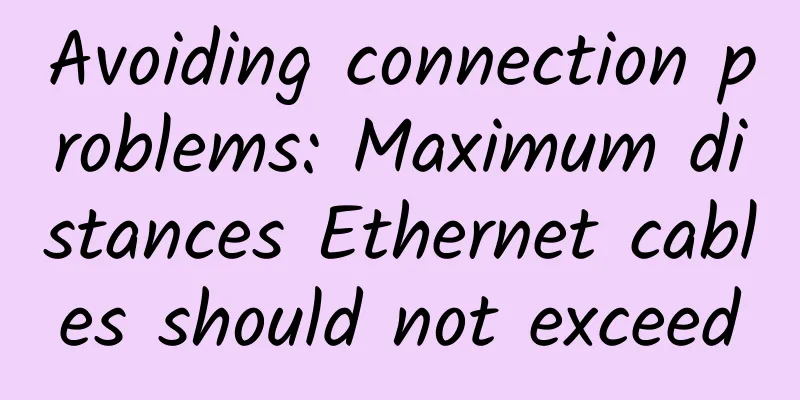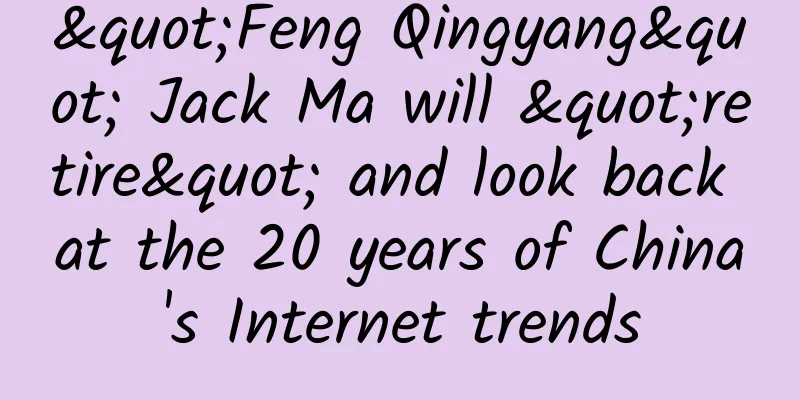Avoiding connection problems: Maximum distances Ethernet cables should not exceed

|
Ethernet cables are a common way to connect devices to a network. However, there is a limit to how far they can go before the signal starts to become unstable. When you browse the Internet, it is common to access web pages using the WiFi network provided by your router. However, there is another option, a more reliable connection that guarantees the best performance in terms of speed, but most importantly speed, and it has to do with Ethernet cables. Unlike wireless connections via WiFi, Ethernet cables create a direct physical connection between your device and your router. This means the signal doesn't need to travel through the air, which reduces interference. What happens if I exceed the maximum distance of an Ethernet cable?However, it is worth noting that there is a limit to how far this cable can go before problems start to set in. As the cable gets longer, resistance increases, slowing down the signal and affecting latency and bandwidth. To avoid these inconveniences, wired connections are made via standard twisted pair Ethernet, which is most common in the home environment, with a maximum recommended distance of 100 meters. This guarantees that the signal maintains its quality, but most importantly, sufficient speed. Although this value may vary depending on the type of cable and its category, it is a relevant reference point to consider when planning your network layout. It is important to remember that not all cables are the same as there are three main types of cables: fiber optic, coaxial cable, and twisted pair. Now, to understand their differences, it is worth mentioning that fiber optics are able to cover longer distances than other models, even up to 2,000 meters in some cases. On the other hand, coaxial cables can reach a maximum distance of 500 meters, while twisted pair cables only have a maximum distance of 100 meters. In this sense, it is understandable that you are wondering which Ethernet cable model you should use to avoid connection problems. Most people need to calculate specific distances for cables in their daily lives. That said, according to the official ANSI/TIA/EIA 568-B guidelines, the maximum permissible cable length for twisted pair wired connections is 90 meters, plus an additional 5 meters at each end. If the cable exceeds this length, signal quality may degrade, which may cause latency issues. For this type of connection, distance is important, so keep in mind that the longer the cable, the greater the chance of encountering data transmission problems. Be sure to consider these recommendations when buying Ethernet cables, especially if you need fairly long lengths, but 100 meters is the maximum you'll need at home. In any case, if you are looking for a reliable and high-performance connection, especially over longer distances, fiber optic and coaxial cables are options you should consider. The advantage of both is that they can be extended up to 2 kilometers without compromising signal quality. |
<<: 5G and eSIM drive enterprise IoT growth
Recommend
The U.S. military attaches great importance to it! 5G private network is about to be implemented at the U.S. Navy base
Recently, Hughes Network Systems (Hughes) announc...
Understand HTTP and HTTPS protocols in ten minutes?
[[276795]] 1. What is a protocol? A network proto...
Industrial Ethernet Market Expected to Exceed $350 Billion by 2032
The Industrial Ethernet market will grow from a c...
LOCVPS: Charge 100 yuan for free in December, 20% off for all items, 30% off for 6G memory package, starting from 66 yuan/month
November is about to end, and LOCVPS has launched...
Donghua Netzhi Jiang Hua: Load balancing + anti-unification is the most popular among users, and security demand will be stronger next year
[51CTO.com original article] Using the Internet t...
Maxthon Hosting: CN2 GIA line VPS monthly payment starts from 54 yuan, and you can choose Los Angeles/Hong Kong/Korea and other data centers
At present, the best domestic access lines for ov...
The Master Key is so powerful! Why can't it crack my neighbor's WiFi? Let's take a look at its cracking principle first
However, you may have discovered a problem. The u...
Gcore (gcorelabs) Ashburn (Virginia) VPS simple test
Previously, I conducted a simple test on some of ...
Average tariffs to drop by another 10%. Senior management has given operators another task target! Are you ready?
At this year's two sessions, the top leadersh...
When Wi-Fi 6 enters the home, car and other industry markets, modules become the key players!
"What's the Wi-Fi password here?" I...
Europe lags behind in 5G rollout, study shows
According to an assessment report released by the...
Obstacles to 5G rollout
While 5G has the potential to open up many exciti...
With ten times storage cost savings, SINO ADM helps enterprises reduce costs and increase efficiency
Preface The COVID-19 pandemic has had an unpreced...
Aruba Named a Leader in Gartner Magic Quadrant for Wired and Wireless LAN Access Infrastructure
November 17, 2017, Beijing - Recently, Aruba, a l...









